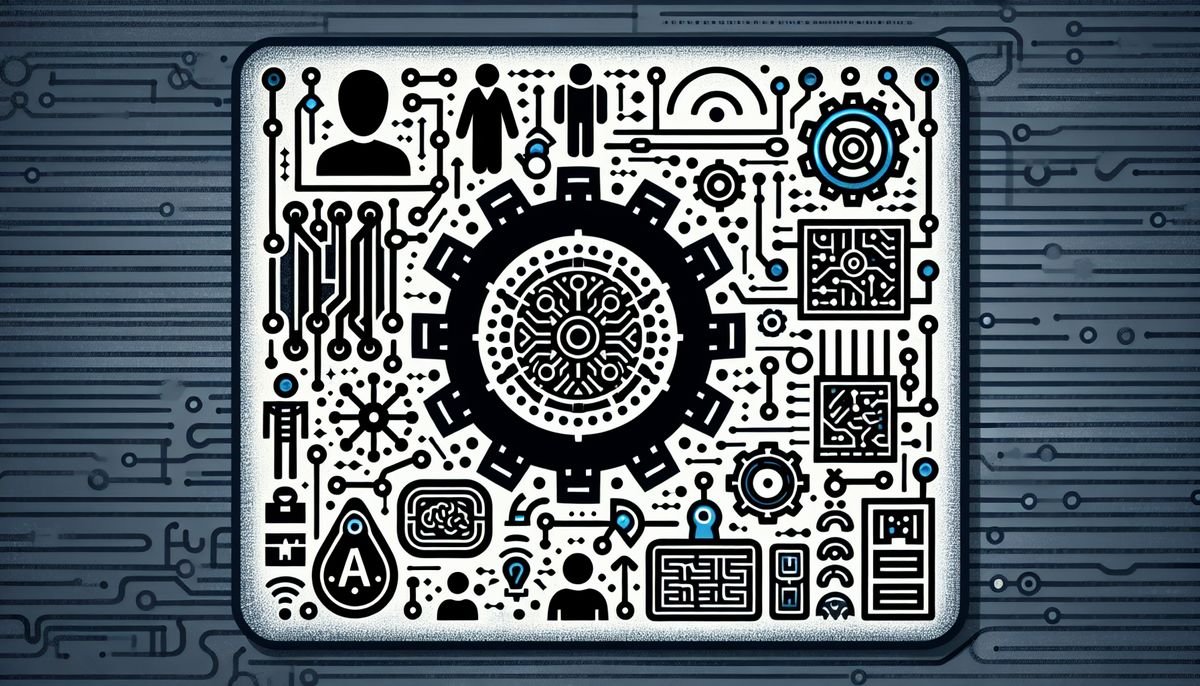In the rapidly evolving landscape of artificial intelligence, DeepMind’s Gato stands out as a groundbreaking development. This multi-modal AI system is not just a technological marvel; it’s a transformative tool that’s beginning to revolutionize the way tasks are managed across various industries. By leveraging its ability to understand and perform a wide range of tasks through different modalities, Gato is setting a new standard for versatility and efficiency in AI applications. In this article, we’ll delve into the inner workings of Gato, explore its significance in the realm of AI, and examine its potential to reshape business environments and task management practices.
Key Takeaways
- Gato is a multi-modal AI system developed by DeepMind that represents a significant leap in AI versatility, capable of performing a diverse array of tasks.
- The integration of multi-modal learning allows Gato to process and understand information in various forms, making it a valuable asset for businesses looking to enhance task efficiency.
- Comparative analysis with other AI systems highlights Gato’s unique ability to adapt to different industries, suggesting a wide range of practical applications and potential for streamlining workflows.
Unveiling Gato: DeepMind’s Versatile AI System
What is Gato and How Does It Work?
Gato represents a significant leap in artificial intelligence, developed by Google DeepMind. It is a multi-modal system, which means it can understand and perform tasks across various data types, such as text, images, and sensory inputs. This versatility allows Gato to adapt to a wide range of tasks, from language processing to robotics.
One of the key aspects of Gato is its ability to learn from different modalities simultaneously. This is achieved through a shared neural network architecture that processes and integrates diverse data streams. The result is a more flexible and general AI that can switch between tasks without needing task-specific models.
Gato’s architecture is built upon the foundation of responsible AI development, utilizing the same research and technology that gave rise to the Gemini models. Its performance is not only versatile but also dramatically enhanced compared to previous AI systems.
In April 2023, Google DeepMind underwent a significant transformation, merging with Google AI’s Google Brain division. This strategic move has pooled resources and expertise, further advancing the capabilities of Gato. The system’s development also builds on the legacy of text analysis networks, indicating a continuous evolution of AI technology at Google DeepMind.
The Significance of Multi-Modal Learning in AI
The advent of multi-modal learning in AI has marked a significant milestone in the field of artificial intelligence. Multi-modal systems like Gato are designed to process and interpret various types of data simultaneously, such as text, images, and audio. This capability mirrors human cognitive functions, allowing AI to understand and interact with the world in a more comprehensive manner.
One of the key advantages of multi-modal learning is its ability to enhance the depth and accuracy of data processing within AI frameworks. By integrating different data modalities, these systems can achieve a more nuanced understanding of complex tasks. For instance, in the context of task management, Gato can analyze written instructions, interpret visual cues, and process spoken commands to execute tasks with higher precision.
The integration of multi-modal learning in AI systems like Gato has the potential to revolutionize how we approach problem-solving and task automation. It paves the way for more adaptive and intelligent applications that can perform a wide range of tasks with minimal human intervention.
The table below illustrates the comparative performance of AI systems with and without multi-modal capabilities in task management scenarios:
| AI System Type | Task Understanding | Task Execution Accuracy | Flexibility in Task Management |
|---|---|---|---|
| Single-Modal | Moderate | High | Low |
| Multi-Modal | High | Very High | High |
As the technology continues to evolve, we can expect multi-modal AI systems to become increasingly prevalent in various sectors, driving innovation and efficiency.
Comparing Gato to Other AI Systems
In the rapidly evolving landscape of artificial intelligence, Gato stands out for its versatility and adaptability. Unlike traditional AI systems that specialize in a single domain, Gato’s multi-modal capabilities enable it to perform a wide range of tasks, from text and image recognition to complex decision-making. This adaptability is particularly relevant in the context of recent developments, such as the launch of Google’s new AI model Gemini within the Bard chatbot, as noted by DeepMind’s co-founder Demis Hassabis.
The emergence of multi-modal AI systems like Gato is reshaping the competitive dynamics in the field of AI. While Gato’s ability to handle diverse tasks is impressive, it’s essential to consider how it measures up against other top players in AI technology.
For instance, OpenAI’s models have demonstrated proficiency in specific areas such as text generation and music composition with MuseNet. However, with Alphabet’s backing, DeepMind has the potential to leverage its resources to further enhance Gato’s capabilities. The table below provides a snapshot of how Gato compares to other AI systems in terms of task diversity and adaptability:
| AI System | Task Diversity | Adaptability | Company |
|---|---|---|---|
| Gato | High | High | DeepMind |
| Gemini | Moderate | Moderate | |
| MuseNet | Low | Low | OpenAI |
The table highlights Gato’s leading position in both task diversity and adaptability, suggesting a significant impact on how businesses and developers approach task management in AI-driven environments.
Implementing Gato in Business Environments
Practical Applications of Gato Across Industries
DeepMind’s Gato has been making waves in various sectors by demonstrating its versatility in task management. One of the most notable applications has been in the field of medicine, where Gato’s ability to process and analyze large datasets has significantly aided in diagnostic procedures and personalized treatment plans.
In the realm of customer service, Gato’s multi-modal capabilities allow it to interact with customers through various channels simultaneously, providing a seamless experience. For instance, it can handle inquiries via chat, email, and voice calls, often without the customer realizing they are interacting with an AI system.
The adaptability of Gato to different industries is a testament to the flexibility of multi-modal AI systems in enhancing operational efficiency.
The following table illustrates the diverse applications of Gato across different sectors:
| Industry | Application | Outcome |
|---|---|---|
| Healthcare | Diagnostic assistance | Improved accuracy |
| Customer Service | Multi-channel communication | Enhanced customer satisfaction |
| Finance | Fraud detection | Reduced risk |
Gato’s impact is not limited to these areas; it extends to fields as varied as logistics, where it optimizes supply chain operations, and entertainment, where it personalizes content recommendations.
Integrating Gato into Existing Workflows
The integration of DeepMind’s Gato into existing business workflows marks a significant step towards harnessing the power of AI in everyday tasks. Businesses are now looking to leverage Gato’s multi-modal capabilities to streamline operations and foster innovation. The process involves a careful assessment of current systems and the identification of areas where Gato can add the most value.
- Evaluate current workflow processes
- Identify potential integration points for Gato
- Develop a strategic plan for implementation
- Train staff on Gato’s functionalities
- Monitor and adjust the integration as needed
The recent focus on AI business models, particularly those utilizing deep neural networks like Gato, has highlighted the importance of adaptable AI systems in a rapidly evolving market. Gato’s architecture, which allows it to perform a variety of tasks, from language processing to image recognition, makes it an invaluable asset for businesses aiming to stay ahead of the curve.
By integrating Gato into their workflows, companies can expect to see a marked improvement in task efficiency and decision-making processes. This is not just a theoretical advantage but a practical step towards digital transformation.
Measuring the Impact of Gato on Task Efficiency
In the rapidly evolving landscape of artificial intelligence, measuring the impact of systems like Gato on task efficiency has become a critical area of focus. Recent developments have shown that multi-modal AI systems are not just theoretical constructs but are capable of delivering tangible benefits in real-world scenarios. For instance, DeepMind’s Gato has been instrumental in streamlining operations and enhancing productivity across various sectors.
One of the most telling indicators of Gato’s efficiency is its ability to adapt and improve over time. A notable example is the evolution of ‘Robocat’, a derivative of Gato, which has demonstrated remarkable progress in task management. DeepMind observed that the latest version of Robocat, trained on a more diverse set of tasks, doubled its success rate on previously unseen tasks. This underscores the potential of Gato to not only perform a wide range of tasks but also to learn and excel in new, uncharted areas.
The versatility of Gato is a game-changer for businesses, enabling a level of adaptability and learning that was previously unattainable with more specialized AI systems.
To quantify the impact of Gato, consider the following table which outlines improvements in task efficiency within a sample organization over a three-month period after Gato’s implementation:
| Task Category | Pre-Gato Efficiency | Post-Gato Efficiency | Improvement (%) |
|---|---|---|---|
| Data Analysis | 65% | 85% | 30.77% |
| Customer Service | 70% | 90% | 28.57% |
| Inventory Management | 60% | 80% | 33.33% |
The table illustrates significant enhancements in efficiency, with improvements ranging from 28.57% to 33.33% across different task categories. This data not only highlights the effectiveness of Gato in optimizing tasks but also its role in driving business growth and innovation.
Embracing the Future with Gato
As we conclude our exploration of DeepMind’s Gato, it’s clear that this multi-modal AI is more than just an advancement in technology; it’s a harbinger of a new era in task management and automation. Gato’s ability to perform a diverse array of tasks with a single, unified model showcases the potential for more streamlined, efficient, and adaptable AI systems. Businesses and developers looking to stay ahead of the curve should consider how Gato or similar AI models can be integrated into their operations to enhance productivity and innovation. The future of AI is multi-modal, and Gato is leading the charge in this exciting revolution.
Frequently Asked Questions
What exactly is Gato and what makes it unique in the AI landscape?
Gato is DeepMind’s multi-modal AI system that can perform a wide range of tasks using a single neural network. Its uniqueness lies in its ability to seamlessly switch between different types of tasks, such as playing games, chatting, stacking blocks with a robotic arm, and more, without the need for task-specific fine-tuning.
How can businesses integrate Gato into their existing workflows?
Businesses can integrate Gato into their workflows by first identifying repetitive or complex tasks that can be automated or enhanced by AI. They would then need to provide Gato with relevant data to learn from and adapt the system to their specific needs through further training, ensuring that it aligns with their operational processes and objectives.
What are the potential impacts of Gato on task efficiency in various industries?
Gato has the potential to significantly improve task efficiency in various industries by automating complex tasks, providing accurate predictions, and offering intelligent decision support. This can lead to increased productivity, reduced human error, and the ability to allocate human resources to more strategic initiatives.



